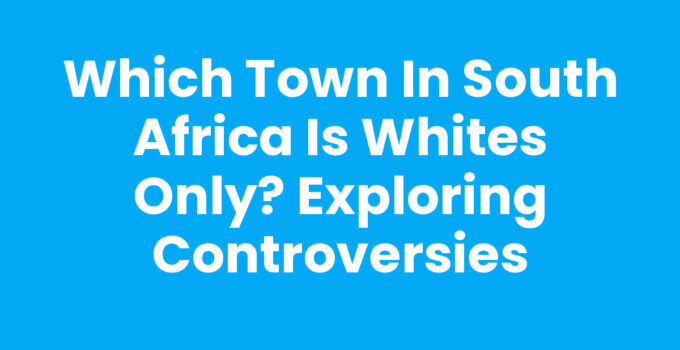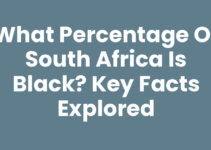South Africa’s history is a tapestry woven with the threads of apartheid, a period characterized by institutionalized racial segregation. One of the most controversial aspects of this legacy is the existence of towns, areas, and communities that, at various times, operated under whites-only rules. In this article, we will delve into the past and present of these towns, examining their implications and the societal reactions they evoke today.
Further Reading: Monthly Weather Bloemfontein: Your Complete Guide Every Month
Which Town in South Africa is Whites Only: A Comprehensive Overview
One town often mentioned in discussions surrounding whites-only communities in South Africa is Orania. Established in 1991, Orania is a settlement in the Northern Cape that is self-identified as a “cultural homeland” for Afrikaners. Its inception was partly a reaction to the changing political landscape in the country following the end of apartheid. In Orania, residents strive to preserve their cultural heritage and language in a community that is exclusively for Afrikaners.
Residents of Orania hold that they are not promoting racism but rather expressing their right to self-determination. Nevertheless, the existence of Orania raises critical questions about racial identity, segregation, and the broader implications of sustaining racially homogenous communities within a diverse society.
The History of Whites-Only Towns in South Africa
To understand towns like Orania, it’s necessary to examine the history of racial segregation in South Africa. During apartheid, towns and cities were designated for specific racial groups, leading to social, economic, and political inequalities that favored the white populace. This system allowed for the establishment of whites-only areas throughout the country, a process that was not just limited to the urban centers but extended to rural regions as well.
As apartheid ended, some areas remained predominantly white due to historic advantages in land ownership and economic resources. However, Orania stands apart as it was created post-apartheid specifically for Afrikaners. The town continues to spark debate and serves as a focal point for discussions on race and identity in modern South Africa.
Contemporary Implications of Whites-Only Areas
Today, the conversation surrounding Orania and similar enclaves is twofold: the right to self-determination versus the realities of racism and segregation in any form. Many criticize such communities as symbolic of an unwillingness to move forward in a reconciled society. Critics argue that these towns perpetuate divisions and do not contribute positively to South Africa’s healing from its difficult past.
Supporters claim that communities like Orania represent an exercise of cultural rights and are necessary for the preservation of their cultural identity. This dichotomy forms a complex debate about heritage, culture, and the future of South Africa as a pluralistic society. Furthermore, the existence of these towns raises questions about the governance of conduct within communities—should inclusivity be mandated by external forces, or should the community determine its rules?
Looking Ahead: The Future of Racially Homogeneous Communities
As South Africa continues to grapple with its historical baggage, the future of racially homogeneous communities remains uncertain. There is a growing awareness of the need for dialogue and understanding between different racial groups, but there are also challenges arising from deeply entrenched beliefs and fears.
Efforts aimed at addressing these issues include government initiatives focused on land reform and economic empowerment for marginalized communities. The goal is to create a more integrated society where all citizens feel they belong, regardless of their racial or cultural background. However, communities like Orania will likely continue to exist as forums for ongoing discussions about race, identity, and what it means to truly belong in a diverse nation.
See Also: Discover Bankovs Boulevard, Bloemfontein: A Hidden Gem
Conclusion
The query “Which town in South Africa is whites only?” not only points to places like Orania but also opens a larger discussion about cultural identity, race relations, and the legacy of apartheid in the country. While some might see the maintenance of such communities as a means of preserving cultural heritage, it is critical to ensure these spaces do not foster division or conflict in an already challenged society. Going forward, the focus should remain on fostering dialogue, understanding, and building a truly inclusive South Africa.
Further Reading: Discover Abraham Greyling Street, Bloemfontein: A Local Gem
Frequently Asked Questions
What is Orania and why is it significant?
Orania is a town in South Africa established as a cultural homeland for Afrikaners, significant for its historical context and as a topic in racial discussions.
Are there other towns in South Africa with similar policies?
While Orania is the most noted, other areas exist that have been associated with exclusive racial practices, although they are less prominent.
What are the contemporary views on whites-only towns?
Contemporary views are mixed, with some supporting cultural preservation while others criticize these communities as perpetuating racism.



